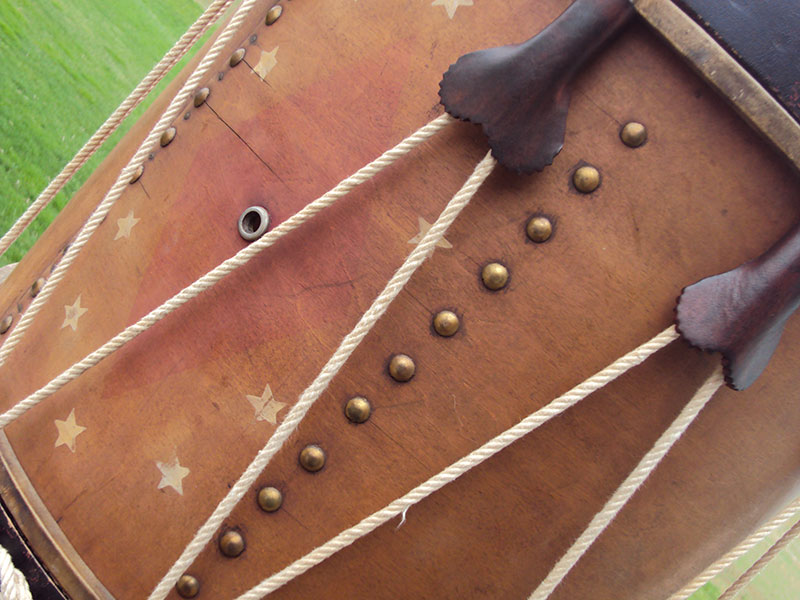Brian Hill - On the Ropes
This video was sent to us by Michael Outlaw of Outlaw Drums: On the Ropes with Brian Hill. Brian talks about Charles W Bonner, civil war drummer, and William S. Tompkins, drum maker. Brian is an expert in drum history. He is full of interesting anecdotes and facts on historical drums. If you love history, you need to check this video out. Brian Hill explains why he is so passionate about the drums he brings to the Museum Series On The Ropes.p
Formally part of the famed William Guthman Collection of Early Americana, this sturdy relic was hand-crafted and painted by Stephen Emory, of Rindge, NH.
Completely constructed of thick cut ash, this sturdy relic from the birth period of our American nation is wonderfully preserved, as should be in the case of such an early, historical piece. Formally of a New England estate, this very unique drum must have been recognized for the role it must have played during a very special time in history, and thus carefully protected from the destructiveness of time and abuse.
This is one of those reviews that is easy to write because the product is so simple that it either works or it doesn't. It either does what the manufacturer says it does or it doesn't. This one works! CUSH pads are an alternative to the felts you use on your cymbal stand. They are made of a proprietary elastomer material, and are designed to allow the cymbals to ring longer and truer without muffling the sound or overtones. They don't collapse or take shape and always return to the original shape.
As with many drums of the 18th and 19 centuries, this full-barrel bass was more than likely hand crafted by a trunk and furniture maker, or possibly even a coach and carriage builder. The main tack pattern surrounding the sling attachments is very common to that which was used on the lids of storage or travel trunks of the era. A drum maker would normally have his own unique tack pattern to identify his work as opposed to a commonly used utilitarian tack design familiar to trunk builders. A secondary brass tack pattern of a circle within a circle is located surrounding the unreinforced vent hole.
Maker: Abner D. StevensCirca: Late 1790’s-Early 1800’s Dimensions: 14.5”(h) x 16.5”(dia.)
As hostilities with England became a not too distant memory, the inhabitants of the new American Nation now had the task of rebuilding not only the physical damage caused by no less than seven years of a very personal war, but had an entire economy to repair as well. Born in a small New England town in 1770, a young and industrious Abner D. Stevens started making drums at his shop in Hancock, Massachusetts, in 1794 as his principle means of income.
















WFL III Drums is the latest chapter in the Ludwig Family’s legacy and love affair with drums and drum building. Since my last review, William F. Ludwig III, has again raised the bar and made these drums even better.